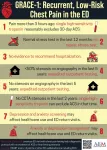Now, in a new study using a non-invasive technique to measure brain activity called high-density electroencephalography (hdEEG), researchers at Yale School of Medicine have assessed the impact of tic suppression on functional connectivity between brain regions.
The study appears in Biological Psychiatry: Cognitive Neuroscience and Neuroimaging, published by Elsevier.
"Tic suppression is an important feature of Tourette syndrome. Understanding how someone may temporarily gain control over their tics may inform several research areas in Tourette syndrome. Yet, brain correlates of tic suppression have not been studied extensively, especially in children," said Denis Sukhodolsky, PhD, senior author of the study, and Associate Professor at the Yale Child Study Center at the Yale School of Medicine, New Haven, CT, USA.
Cameron Carter, MD, Editor of Biological Psychiatry: Cognitive Neuroscience and Neuroimaging, said of the study, "Understanding brain mechanisms associated with successful coping in disorders such as Tourette syndrome opens up opportunities for developing targeted treatments to enhance the innate self-control that normally emerges as the brain matures."
The team led by Dr. Sukhodolsky recorded the brain activity of 72 children, aged 8 to 16 years old, with Tourette syndrome using hdEEG, while they were ticcing freely and while they were suppressing their tics. The researchers then assessed connectivity between the different regions in the brain.
The authors found that connectivity between multiple brain regions was increased while children suppressed their tics. "Some of these regions are part of the default mode network, an array of brain regions engaged during internal thought processes such as daydreaming," explained first author Simon Morand-Beaulieu, PhD.
Additionally, the researchers reported that functional brain connectivity during tic suppression was positively correlated with age, suggesting that the brain networks of tic suppression undergo developmental changes in response to the experience of tics. "This increase in functional connectivity as children mature is consistent with increasing tic suppression capacities developing into adolescence as well as a better awareness of the sensory phenomena accompanying tics," said Dr. Morand-Beaulieu.
The study highlights the brain mechanism involved in a temporary decrease in tic frequency, which could have therapeutic implications. "It will be important to assess whether the same mechanism plays a role in a more structured intervention to decrease tic severity, such as behavioral therapy for Tourette syndrome," said Dr. Sukhodolsky.
INFORMATION:
Notes for editors
The article is "Increased alpha-band connectivity during tic suppression in children with Tourette syndrome revealed by source EEG analysis," by Simon Morand-Beaulieu, Jia Wu, Linda Mayes, Heidi Grantz, James Leckman, Michael Crowley, Denis Sukhodolsky (https://doi.org/10.1016/j.bpsc.2021.05.001). It appears as an Article in Press in Biological Psychiatry: Cognitive Neuroscience and Neuroimaging, published by Elsevier.
Copies of this paper are available to credentialed journalists upon request; please contact Rhiannon Bugno at BPCNNI@sobp.org or +1 254 522 9700. Journalists wishing to interview the authors may contact Simon Morand-Beaulieu at simon.morand-beaulieu@yale.edu or Denis Sukhodolsky at denis.sukhodolsky@yale.edu or +1 (203) 785-6446.
The authors' affiliations and disclosures of financial and conflicts of interests are available in the article.
Cameron S. Carter, MD, is Professor of Psychiatry and Psychology and Director of the Center for Neuroscience at the University of California, Davis. His disclosures of financial and conflicts of interests are available here.
About Biological Psychiatry: Cognitive Neuroscience and Neuroimaging
Biological Psychiatry: Cognitive Neuroscience and Neuroimaging is an official journal of the Society of Biological Psychiatry, whose purpose is to promote excellence in scientific research and education in fields that investigate the nature, causes, mechanisms and treatments of disorders of thought, emotion, or behavior. In accord with this mission, this peer-reviewed, rapid-publication, international journal focuses on studies using the tools and constructs of cognitive neuroscience, including the full range of non-invasive neuroimaging and human extra- and intracranial physiological recording methodologies. It publishes both basic and clinical studies, including those that incorporate genetic data, pharmacological challenges, and computational modeling approaches. The 2019 Impact Factor score for Biological Psychiatry: Cognitive Neuroscience and Neuroimaging is 5.335. http://www.sobp.org/bpcnni
About Elsevier
As a global leader in information and analytics, Elsevier helps researchers and healthcare professionals advance science and improve health outcomes for the benefit of society. We do this by facilitating insights and critical decision-making for customers across the global research and health ecosystems.
In everything we publish, we uphold the highest standards of quality and integrity. We bring that same rigor to our information analytics solutions for researchers, health professionals, institutions and funders.
Elsevier employs 8,100 people worldwide. We have supported the work of our research and health partners for more than 140 years. Growing from our roots in publishing, we offer knowledge and valuable analytics that help our users make breakthroughs and drive societal progress. Digital solutions such as ScienceDirect, Scopus, SciVal, ClinicalKey and Sherpath support strategic research management, R&D performance, clinical decision support, and health education. Researchers and healthcare professionals rely on our 2,500+ digitized journals, including The Lancet and Cell, our 40,000 eBook titles; and our iconic reference works, such as Gray's Anatomy. With the Elsevier Foundation and our external Inclusion & Diversity Advisory Board, we work in partnership with diverse stakeholders to advance inclusion and diversity in science, research and healthcare in developing countries and around the world.
Elsevier is part of RELX, a global provider of information-based analytics and decision tools for professional and business customers. http://www.elsevier.com
Media contact
Rhiannon Bugno, Editorial Office
Biological Psychiatry: Cognitive Neuroscience and Neuroimaging
+1 254 522 9700
BPCNNI@sobp.org





